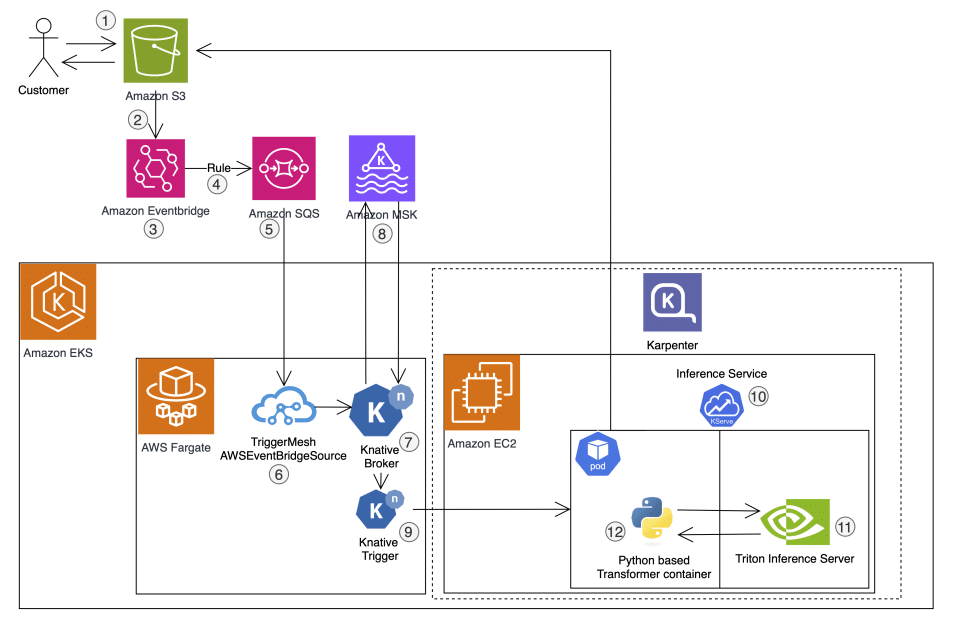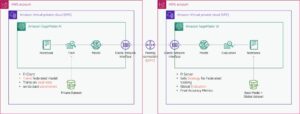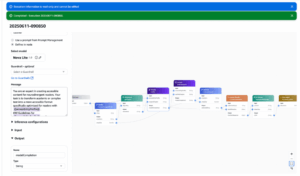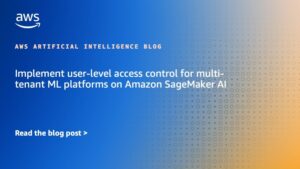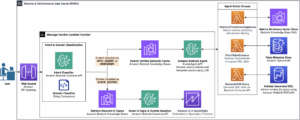CONXAI Technology GmbH is at the forefront of developing artificial intelligence (AI) platforms for the Architecture, Engineering, and Construction (AEC) industry. The innovative platform aims to empower industry experts, facilitating the efficient creation of complex use cases.
The context of construction sites, which often have multiple surveillance cameras, generates a large volume of visual data. Here, CONXAI applies AI to analyze these image streams and extract relevant information. However, GDPR compliance requires that all individuals appearing in the recordings be anonymized, achieved through masking or blurring of identities.
CONXAI’s latest solution is based on an advanced segmentation model, called OneFormer, hosted on Amazon Web Services (AWS). This model uses a variety of services like Amazon Simple Storage Service (S3), Amazon Elastic Kubernetes Service (EKS), KServe, and NVIDIA Triton. The offering of this model comes in two modalities: as “Model as a Service” (MaaS), which allows integration through an API, and as “Software as a Service” (SaaS), providing an intuitive dashboard to manage cameras, review recordings, and ensure GDPR compliance with automatic anonymization.
This AI model has been fine-tuned with its own dataset that includes over 50,000 automatically labeled images on construction sites, giving it significantly higher accuracy than other solutions. Its ability to recognize over 40 categories of specialized objects, such as cranes, excavators, and portable toilets, makes it a valuable tool for the industry.
CONXAI’s story began with a small cloud company that, despite offering competitive prices on GPUs, lacked essential services for machine learning applications. The migration to AWS was a crucial step, allowing them to access a robust ecosystem, starting with deploying a single AI container on an Amazon EC2 instance and evolving to a more scalable architecture.
One of the main reasons they chose AWS was the team’s previous experience with this platform and the initial credits it offered them, proving invaluable for the startup’s growth. Currently, CONXAI extensively relies on AWS managed services, allowing them to reduce maintenance burden and pay only for what they actually use.
To maintain independence from the cloud, they utilized Kubernetes, enabling them to deploy their stack on the client’s site, facilitating federated learning. This approach ensures that only the model parameters are transferred to the cloud, avoiding handling sensitive information.
The development and optimization of their new architecture took between two and three months, while continuous model improvement, involving training with more precise data, requires 3 to 4 weeks on a single GPU. The implementation is fully automated, using CI/CD pipelines on GitLab, Terraform, and Helm, allowing for downtime-free deployments in less than an hour.
With the transition to AWS and the implementation of their OneFormer model, CONXAI has achieved over 90% GPU utilization and minimized processing errors to almost zero. Separating the model from pre and post-processing code has been a key decision in their design to achieve such high efficiency.
CONXAI’s future plans include using the model results for advanced analysis and data science, as well as developing generative AI features. They also plan to include more diverse image labeling and expand model training with new specific construction classes, with a continuous improvement cycle in close collaboration with AWS experts to optimize the use of AWS Inferentia chipsets.
via: MiMub in Spanish

